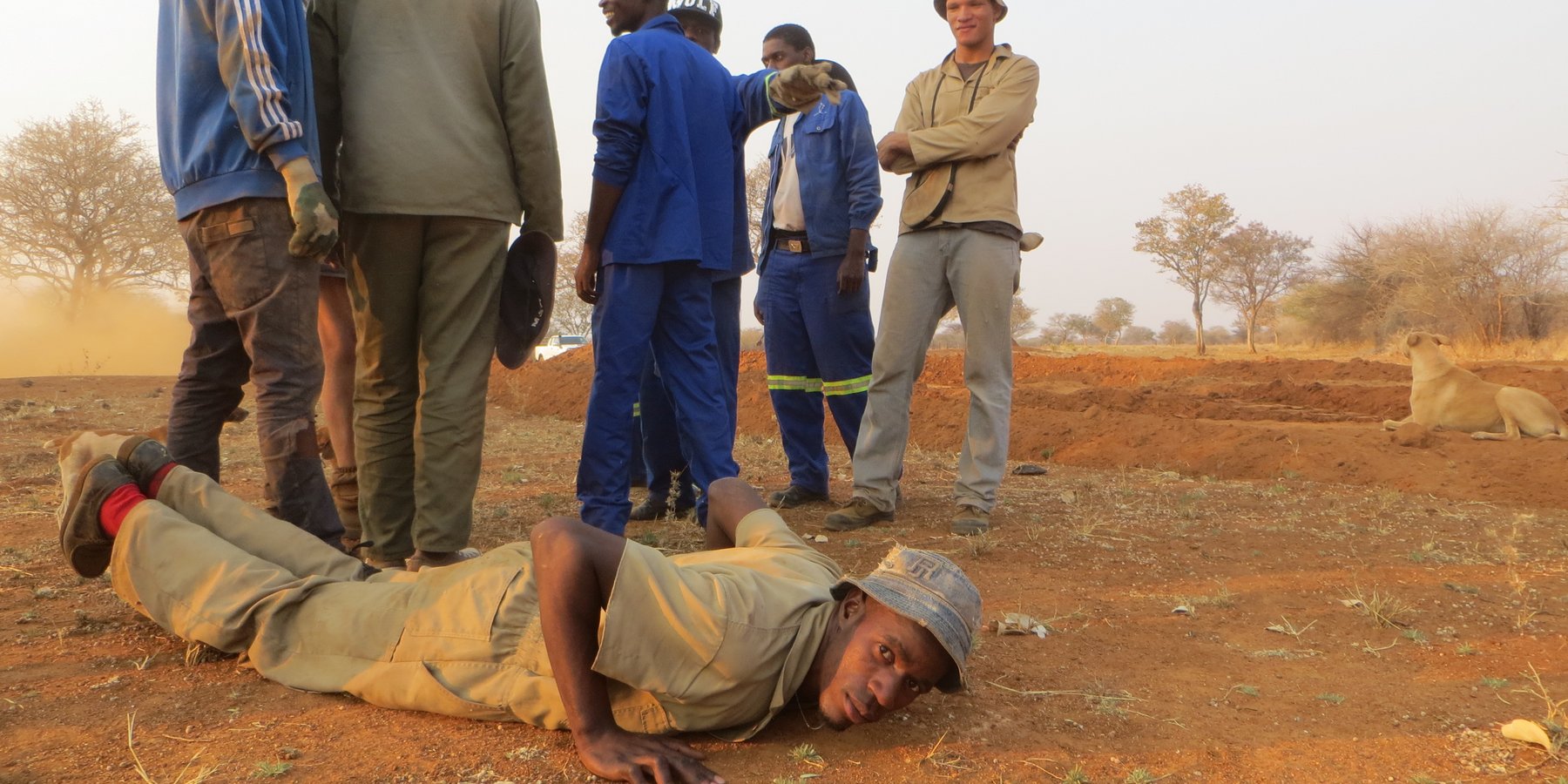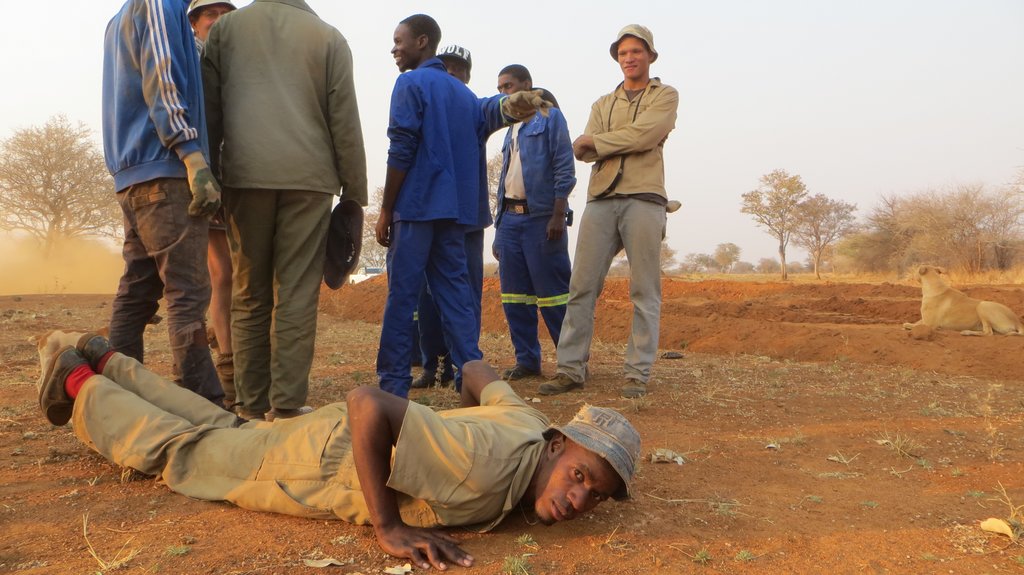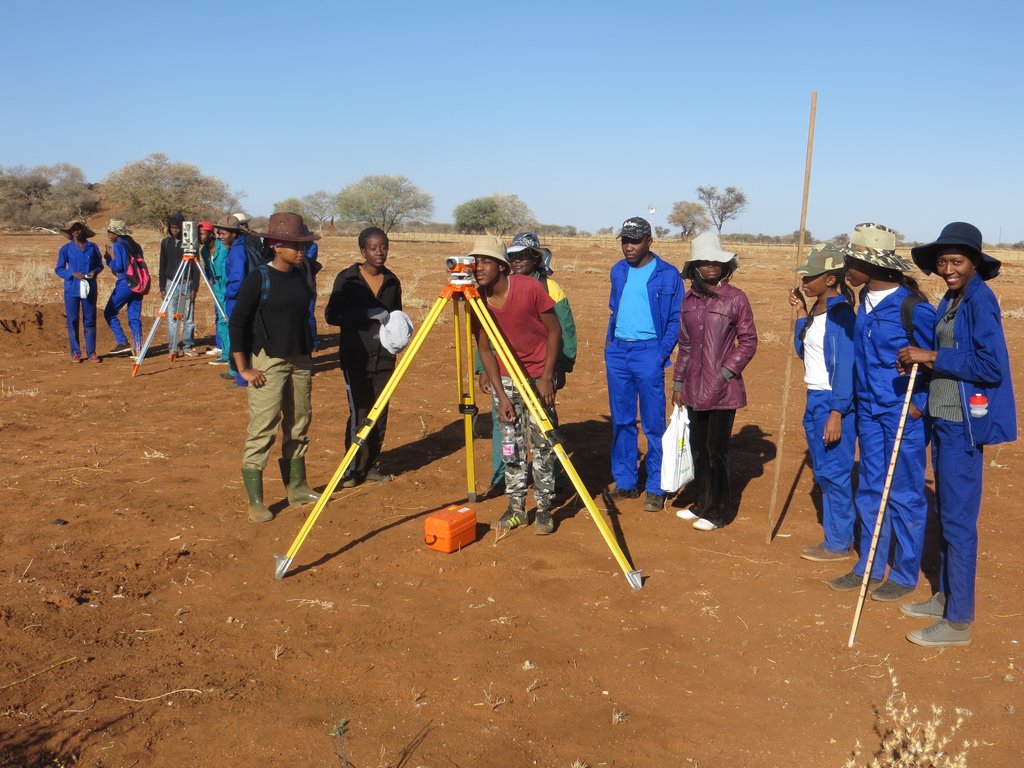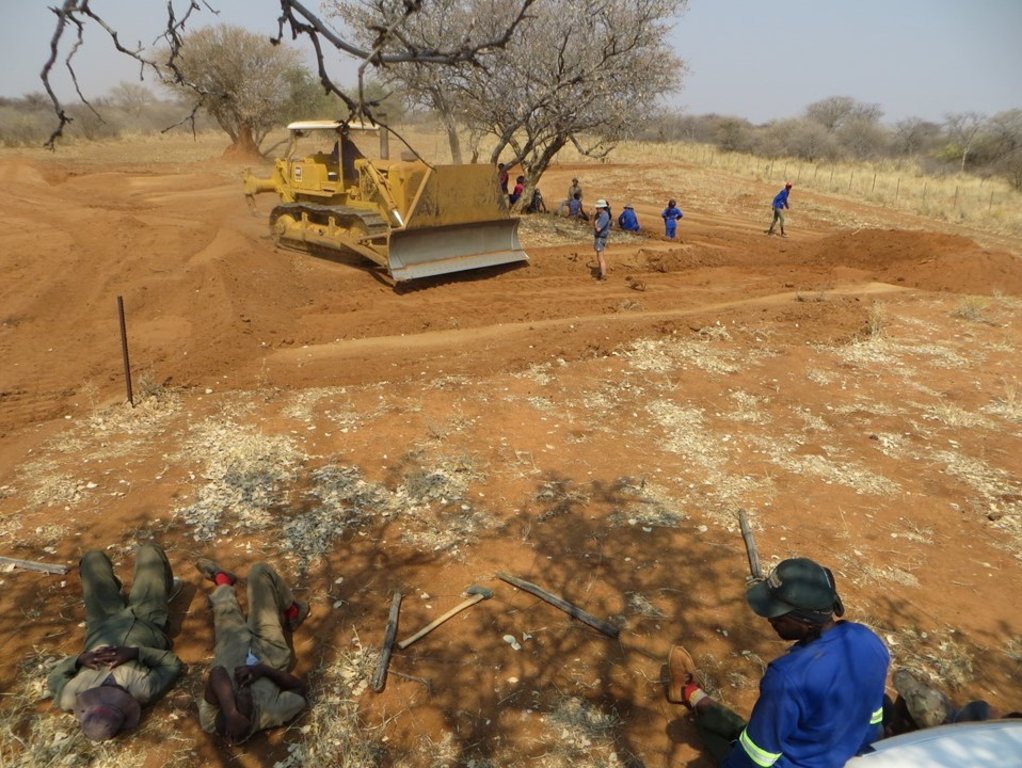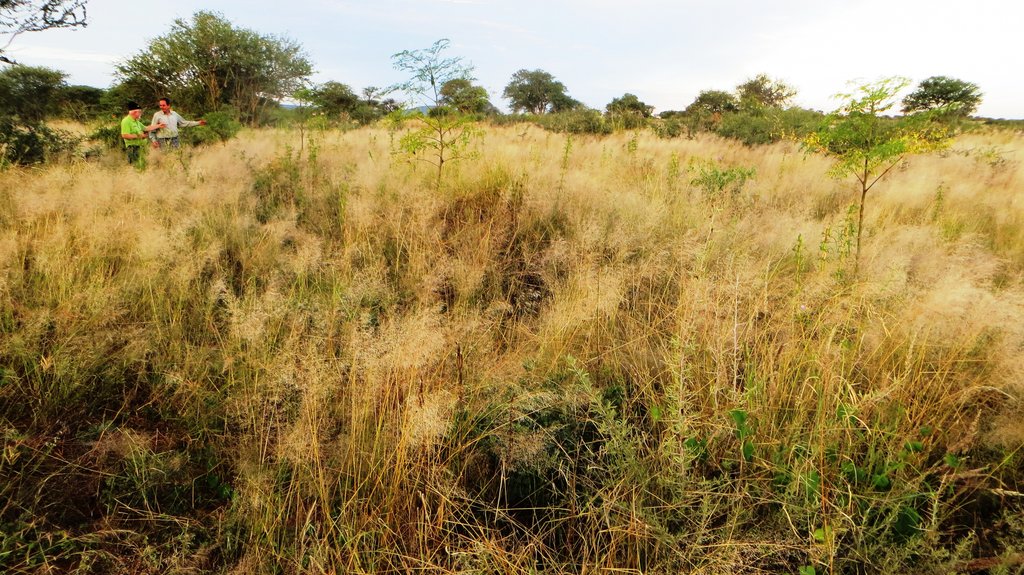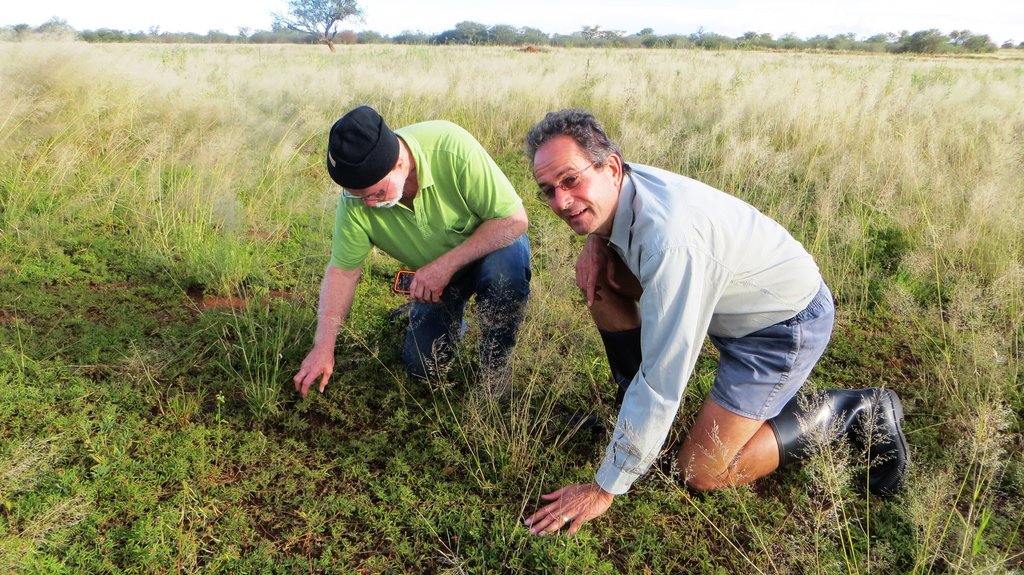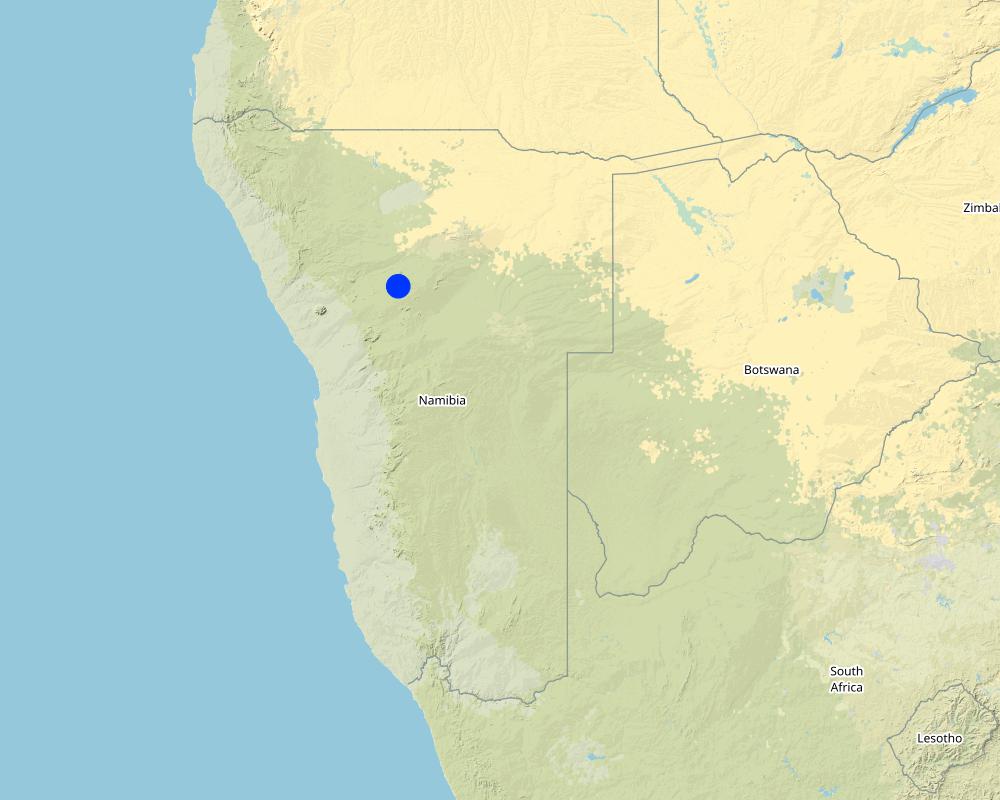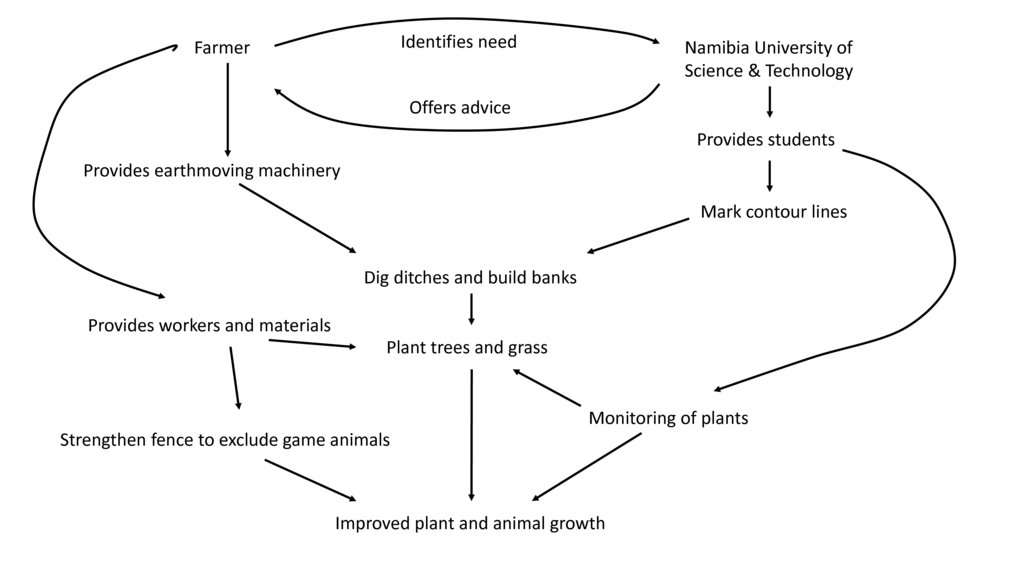Arrangements to convert degraded rangeland into fruitful landscape [Namibie]
- Création :
- Mise à jour :
- Compilateur : Ibo Zimmermann
- Rédacteur : –
- Examinateurs : Rima Mekdaschi Studer, Joana Eichenberger
Otjikunino
approaches_2847 - Namibie
Voir les sections
Développer tout Réduire tout1. Informations générales
1.2 Coordonnées des personnes-ressources et des institutions impliquées dans l'évaluation et la documentation de l'Approche
exploitant des terres:
Kahl Uwe
+264 67 290004 / +264811486666
uwe2008@iway.na
Farm Middelplaats
P.O. Box 213 Otjiwarongo
Namibie
Spécialiste GDT:
Pringle Hugh
hpringle1@bigpond.com
Ecosystem Management Understanding
P.O. Box 8522 Alice Springs NT 0871
Australie
Nom du projet qui a facilité la documentation/ l'évaluation de l'Approche (si pertinent)
Southern African Science Service Centre for climate change and Adaptive Land management (SASSCAL)Nom du projet qui a facilité la documentation/ l'évaluation de l'Approche (si pertinent)
Book project: Guidelines to Rangeland Management in Sub-Saharan Africa (Rangeland Management)Nom du ou des institutions qui ont facilité la documentation/ l'évaluation de l'Approche (si pertinent)
Namibia University of Science and Technology ( NUST) - NamibieNom du ou des institutions qui ont facilité la documentation/ l'évaluation de l'Approche (si pertinent)
German Federal Ministry of Education and Research (BMBF) - Allemagne1.3 Conditions relatives à l'utilisation par WOCAT des données documentées
Quand les données ont-elles été compilées (sur le terrain)?
2017
Le compilateur et la(les) personne(s) ressource(s) acceptent les conditions relatives à l'utilisation par WOCAT des données documentées:
Oui
1.4 Références au(x) questionnaire(s) sur les Technologies de GDT
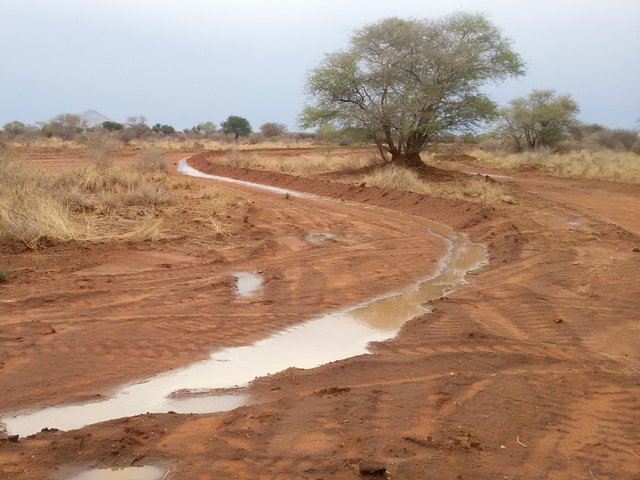
Infiltration ditches and ponding banks [Namibie]
Construction of contour ditches and ponding banks/ bunds to trap rainwater for infiltration. Improved growth of plants and replenishment of groundwater is promoted, while safely discharging excess water to avoid erosion. Integrated with other technologies that treat the root causes of rangeland degradation - rather than a stand-alone technology.
- Compilateur : Ibo Zimmermann
2. Description de l'Approche de GDT
2.1 Courte description de l'Approche
Making arrangements between a commercial farmer and agriculture students to raise the productivity of rangeland - through managing runoff to grow multipurpose trees and bushes.
2.2 Description détaillée de l'Approche
Description détaillée de l'Approche:
The approach was to form linkages between the Namibia University of Science and Technology (NUST) and a large-scale commercial farmer to improve the efficiency of rainwater on rangeland. This was technically achieved by reducing runoff while increasing infiltration and transpiration. The objective is to share knowledge and experiences gained by the farmer to grow valuable woody plants, grass and herbs, which students could then apply elsewhere. Since the approach is applied in parts of the rangeland that experience high runoff, one of the first stages of implementation is to address the root causes of erosion - if not already in place. This could be through sound grazing management that provides sufficient rest for grasses to replenish food reserves after grazing. In turn this maintains grasses in a nutritious, leafy stage of growth. If infrastructure such as a farm road or dam has concentrated runoff water, then this too needs to be addressed, by spreading the runoff over gentle and wide portions of the landscape. Thereafter, an appropriate site is identified based largely on the local knowledge of the farmer. A variety of circumstances are taken into account to select the appropriate site, such as one that (a) receives considerable runoff rainwater, (b) has sufficiently deep soil for earthmoving and (c) proximity to where the farmer lives to enable more intensive management than that required by normal rangeland. Contour lines and gentle gradients are then laid out, whether by dumpy or laser level as was done by NUST students, or generated by analysis of aerial photographs taken by drone. Earthmoving equipment is then used for digging ditches and raising bunds or ponding banks to harvest rainwater. For smaller areas or where labour is plentiful, the contour ditches can be dug by hand – as was done by students on the campus of Katutura Youth Enterprise Centre (KAYEC) in Windhoek. After enough rain had fallen to sufficiently moisten the soil below contour ditches, tree seedlings were planted. This was done by farm workers and students at both the Middelplaats farm and KAYEC. Trees included large canopy species, shorter thornless types for “chop and drop” mulching and those that produce fruits or edible leaves. While the banks become crucial fertile patches in this arid landscape, they also act as broad barriers to sheet flow, slowing it down and increasing infiltration rates locally. Thus degraded “leaky landscapes” turn into “sponge landscapes” and restore deeper and more persistent soil moisture. The greatest cost, for earthmoving, was borne by the farmer. NUST paid for its students to visit the farm, sometimes supported by the landscape literacy project of SASSCAL funded by the German BMBF, which also brought in a technical advisor.
2.3 Photos de l'approche
2.4 Vidéos de l'Approche
Commentaire, brève description:
Only a short section in the film from 18m07s to 19m15s
https://www.youtube.com/watch?v=6C4V_Cib8ts
Date:
08/04/2015
Lieu:
Farm Middelplaats and KAYEC campus, both in Namibia
Nom du vidéaste:
Andrew Botelle
2.5 Pays/ région/ lieux où l'Approche a été appliquée
Pays:
Namibie
Région/ Etat/ Province:
Otjozondjupa
Autres spécifications du lieu :
Farm Middelplaats
Commentaires:
The point is at the homestead of Farm Middelplaats
Map
×2.6 Dates de début et de fin de l'Approche
Indiquez l'année de démarrage:
2014
Date (année) de fin de l'Approche (si l'Approche n'est plus appliquée):
1900
2.7 Type d'Approche
- initiative/ innovation récente locale
2.8 Principaux objectifs de l'Approche
To make arrangements between a university and a farmer to improve rainwater efficiency in rangeland for growing valuable trees, grass and herbs for multiple use.
2.9 Conditions favorisant ou entravant la mise en œuvre de la(des) Technologie(s) appliquée(s) sous l'Approche
normes et valeurs sociales/ culturelles/ religieuses
- entrave
Viewed with scepticism by some conventional farmers, who do not believe that rainwater harvesting can be cost-effective in rangeland.
disponibilité/ accès aux ressources et services financiers
- entrave
May be difficult to convince lenders of repayment potential.
cadre institutionnel
- favorise
The Namibia University of Science and Technology appreciates the valuable experience that its students can gain through this approach.
collaboration/ coordination des acteurs
- favorise
A trustworthy relationship has developed.
cadre juridique (régime foncier, droits d'utilisation des terres et de l'eau)
- favorise
Freehold land is being used.
gouvernance foncière (prise de décisions, mise en œuvre et application des décisions)
- favorise
Under control of willing farmer at Middelplaats.
- entrave
Engineers dug a trench at KAYEC to drain water off the land, thus defeating the purpose of rainwater harvesting ditches constructed by students.
connaissances sur la GDT, accès aux supports techniques
- favorise
There is willingness to gain further experience through experimentation
marchés (pour acheter les intrants, vendre les produits) et prix
- favorise
There is demand for the diverse products from fruitful landscapes.
charge de travail, disponibilité de la main-d'œuvre
- favorise
Farmer has access to earthmoving equipment with good operators.
- entrave
A road grader is not big enough for the job. The ideal machine is a CAT 14 bulldozer.
3. Participation et rôles des parties prenantes impliquées dans l'Approche
3.1 Parties prenantes impliquées dans l'Approche et rôles
- exploitants locaux des terres / communautés locales
Farmer.
Implements the activities.
- Spécialistes de la GDT/ conseillers agricoles
Two staff of the Namibia University of Science and Technology (NUST).
Advise on technicalities.
- chercheurs
Students of the Namibia University of Science and Technology (NUST).
Monitoring effectiveness of the technology.
- enseignants/ élèves/ étudiants
Classes of students of the Namibia University of Science and Technology (NUST).
Mark out contour lines where the technology is to be implemented.
- organisation internationale
Southern African Science Service Centre for climate change and Adaptive Land management.
Funds an international advisor and students to participate in the project.
3.2 Participation des exploitants locaux des terres/ communautés locales aux différentes phases de l'Approche
| Participation des exploitants locaux des terres/ communautés locales | Spécifiez qui était impliqué et décrivez les activités | |
|---|---|---|
| initiation/ motivation | interactive | Farmer requested advice from NUST and discussions took place. |
| planification | interactive | A plan was drawn up through collaboration between farmer and advisers. |
| mise en œuvre | interactive | NUST students marked out contour lines. Farmer organised construction of infrastructure, planting of trees and their irrigation. |
| suivi/ évaluation | interactive | Farmer keeps records of activities and students track tree survival and growth. |
3.3 Diagramme/ organigramme (si disponible)
Description:
Linkages between farmer and university to convert rangeland into fruitful landscape.
Auteur:
Ibo Zimmermann
3.4 Prises de décision pour la sélection de la Technologie/ des Technologies
Indiquez qui a décidé de la sélection de la Technologie/ des Technologies à mettre en œuvre:
- tous les acteurs concernés dans le cadre d'une approche participative
Expliquez:
The farmer of Middelplaats asked for advice from NUST, discussions were held, a plan was jointly drafted, followed by implementation by both farmer and students and advisers of NUST. Informal reviews are held annually where key issues are discussed and the project is “tweaked”.
Spécifiez sur quelle base ont été prises les décisions:
- l'évaluation de connaissances bien documentées en matière de GDT (prises de décision fondées sur des preuves tangibles)?
- les résultats de recherches?
- expériences et opinions personnelles (non documentées)
- External experts' visits and suggestions
4. Soutien technique, renforcement des capacités et gestion des connaissances
4.1 Renforcement des capacités/ formation
Une formation a-t-elle été dispensée aux exploitants des terres/ autres parties prenantes?
Oui
Spécifiez qui a été formé:
- exploitants des terres
- personnels/ conseillers de terrain
- Students
Formats de la formation:
- sur le tas
- cours
Thèmes abordés:
Theory of rangeland science, water cycling and landscape literacy. Practical observational skills and use of dumpy and laser levels.
Commentaires:
The farmer was trained in planning banks with a laser level, as were two staff in marking contour lines. The machine operator was trained in earthworks.
4.2 Service de conseils
Les exploitants des terres ont-ils accès à un service de conseils?
Oui
Spécifiez si le service de conseils est fourni:
- dans les champs des exploitants?
Décrivez/ commentez:
The farmer could potentially offer an advisory service to other farmers based on experiences gained.
4.3 Renforcement des institutions (développement organisationnel)
Des institutions ont elles été mises en place ou renforcées par le biais de l'Approche?
- non
4.4 Suivi et évaluation
Le suivi et l'évaluation font ils partie de l'Approche? :
Oui
Si oui, ce document est-il destiné à être utilisé pour le suivi et l'évaluation?
Non
4.5 Recherche
La recherche a-t-elle fait partie intégrante de l’Approche?
Oui
Spécifiez les thèmes:
- économie/ marketing
- écologie
Donnez plus de détails et indiquez qui a mené ces recherches:
Small research projects are carried out by students of the Namibia University of Science and Technology to fulfil requirements for their course work.
5. Financement et soutien matériel externe
5.1 Budget annuel de la composante GDT de l'Approche
Si le budget annuel précis n'est pas connu, indiquez une fourchette:
- 2 000-10 000
Commentez (par ex. principales sources de financement/ principaux bailleurs de fonds):
Mostly paid for by farmer, for operation of earthmoving equipment, which will not need to be repeated annually. A small amount for fieldwork by students and advisors paid from SASSCAL research funds.
5.2 Soutiens financiers/ matériels fournis aux exploitants des terres
Les exploitants des terres ont-ils reçu un soutien financier/ matériel pour la mise en œuvre de la Technologie/ des Technologies?
Non
5.3 Subventions pour des intrants spécifiques (incluant la main d'œuvre)
- autre
| Autre (spécifiez) | Dans quelle mesure | Spécifiez les subventions |
|---|---|---|
| Marking of contour lines | Done as part of student training |
Si la main d'œuvre fournie par les exploitants des terres était un intrant substantiel, elle était:
- payée en espèces
Commentaires:
Fully paid by farmer at Middelplaats, but provided at KAYEC by students as part of their training.
5.4 Crédits
Des crédits ont-ils été alloués à travers l'Approche pour les activités de GDT?
Non
5.5 Autres incitations ou instruments
D'autres incitations ou instruments ont-ils été utilisés pour promouvoir la mise en œuvre des Technologies de GDT?
Oui
Si oui, spécifiez:
Advice was provided on implementation, and contour lines were marked out by students.
6. Analyses d'impact et conclusions
6.1 Impacts de l'Approche
Est-ce que l'Approche a autonomisé les exploitants locaux des terres, amélioré la participation des parties prenantes?
- Non
- Oui, un peu
- Oui, modérément
- Oui, beaucoup
Only one farmer and his workers have been deeply involved. Others have been briefly exposed to the project.
Est-ce que l'Approche a permis la prise de décisions fondées sur des données probantes?
- Non
- Oui, un peu
- Oui, modérément
- Oui, beaucoup
Records of tree survival determined the need for initial irrigation.
Est-ce que l'Approche a aidé les exploitants des terres à mettre en œuvre et entretenir les Technologies de GDT?
- Non
- Oui, un peu
- Oui, modérément
- Oui, beaucoup
By advising the farmer at different stages of implementation.
Est-ce que l'Approche a amélioré la coordination et la mise en œuvre de la GDT selon un bon rapport coût-efficacité?
- Non
- Oui, un peu
- Oui, modérément
- Oui, beaucoup
At a key meeting it was agreed that grazing pressure from horses and wildlife was holding back the project.
Est-ce que l'Approche a amélioré les connaissances et les capacités des exploitants des terres pour mettre en œuvre la GDT?
- Non
- Oui, un peu
- Oui, modérément
- Oui, beaucoup
Experience gained by farmer and workers, and exposure to some other farmers.
Est-ce que l'Approche a amélioré les connaissances et les capacités des autres parties prenantes?
- Non
- Oui, un peu
- Oui, modérément
- Oui, beaucoup
NUST students gained experience and understanding.
Est-ce que l'Approche a amélioré l'égalité entre hommes et femmes et autonomisé les femmes et les filles?
- Non
- Oui, un peu
- Oui, modérément
- Oui, beaucoup
Students who participated included many females.
Est-ce que l'Approche a conduit à améliorer la sécurité alimentaire et/ou la nutrition?
- Non
- Oui, un peu
- Oui, modérément
- Oui, beaucoup
Growth of fruit/edible leaf/fodder trees, such as Moringa oleifera, and improved forage.
Est-ce que l'Approche a conduit à améliorer l'accès à l'eau et l'assainissement?
- Non
- Oui, un peu
- Oui, modérément
- Oui, beaucoup
Improved infiltration replenishes groundwater, which is used by both people and animals for drinking, and lush forage reduces drinking by livestock.
Est-ce que l'Approche a amélioré la capacité des exploitants des terres à s'adapter aux changements/ extrêmes climatiques et a atténué les catastrophes liées au climat?
- Non
- Oui, un peu
- Oui, modérément
- Oui, beaucoup
Improved rainwater -use efficiency on small part of farm.
Est-ce que l'Approche a conduit à des emplois, des opportunités de revenus?
- Non
- Oui, un peu
- Oui, modérément
- Oui, beaucoup
Saleable products such as Moringa leaves.
6.2 Principale motivation des exploitants des terres pour mettre en œuvre la GDT
- augmenter la production
Grass and trees grow better where rainwater infiltrated
- augmenter la rentabilité/ bénéfice, rapport coûts-bénéfices
More of better quality forage
- réduire la dégradation des terres
Better plant cover and soil biology
- réduire les risques de catastrophe
Improved buffering against drought
- conscience environnementale
By students and farm workers are exposed to the approach
- améliorer les connaissances et compétences en GDT
By students and farm workers are exposed to the approach
- améliorer l'esthétique
Less bare ground and a more diverse landscape with reduction in extremes of temperature
6.3 Durabilité des activités de l'Approche
Les exploitants des terres peuvent-ils poursuivre ce qui a été mis en œuvre par le biais de l'Approche (sans soutien extérieur)?
- oui
Si oui, décrivez de quelle manière:
The farmer will continue to finance the maintenance work, the costs of which are expected to be covered by the increase in production.
6.4 Points forts/ avantages de l'Approche
| Points forts/ avantages/ possibilités du point de vue de l'exploitant des terres |
|---|
| Advice from the university is appreciated. |
| Marking out of contour lines by students is appreciated. |
| Points forts/ avantages/ possibilités du point de vue du compilateur ou d'une autre personne ressource clé |
|---|
| Students gain useful experience on the farm. |
6.5 Faiblesses/ inconvénients de l'Approche et moyens de les surmonter
| Faiblesses/ inconvénients/ risques du point de vue de l’exploitant des terres | Comment peuvent-ils être surmontés? |
|---|---|
| Students are not always available at the optimal times of the year. | By training farm workers to mark out contour lines. |
| Faiblesses/ inconvénients/ risques du point de vue du compilateur ou d'une autre personne ressource clé | Comment peuvent-ils être surmontés? |
|---|---|
| Students might make mistakes, as they are still learning. | Prepare students well and check their work. |
7. Références et liens
7.1 Méthodes/ sources d'information
- visites de terrain, enquêtes sur le terrain
As part of ongoing cooperation
- Participation in fieldwork and e-mail communication with land user and specialist
Participation in fieldwork and e-mail communication with land user and specialist
7.2 Références des publications disponibles
Titre, auteur, année, ISBN:
Back from the brink, Andrews, 2006, 0-7333-1962-9
Disponible à partir d'où? Coût?
https://www.amazon.com/Back-Brink-Australias-Landscape-Saved/dp/0733319629 $37
Titre, auteur, année, ISBN:
Beyond the brink, Andrews, 2008, 978-0733324109
Disponible à partir d'où? Coût?
https://www.amazon.com/Beyond-Brink-Sustainable-Australian-Landscape/dp/073332410X $59
Titre, auteur, année, ISBN:
Rainwater harvesting for drylands and beyond: Vol 1 – Guiding principles to welcome rainfall into your life and landscape, Lancaster, 2009, 978-0-9772464-0-3
Disponible à partir d'où? Coût?
https://www.amazon.com/Rainwater-Harvesting-Drylands-Beyond-2nd/dp/0977246434 $20
7.3 Liens vers les informations pertinentes disponibles en ligne
Titre/ description:
Principles of natual sequence farming
URL:
http://www.nsfarming.com/principles.html
Titre/ description:
Rangeland Rehydration
URL:
www.emulandrecovery.org.au
Liens et modules
Développer tout Réduire toutLiens

Infiltration ditches and ponding banks [Namibie]
Construction of contour ditches and ponding banks/ bunds to trap rainwater for infiltration. Improved growth of plants and replenishment of groundwater is promoted, while safely discharging excess water to avoid erosion. Integrated with other technologies that treat the root causes of rangeland degradation - rather than a stand-alone technology.
- Compilateur : Ibo Zimmermann
Modules
Aucun module trouvé


